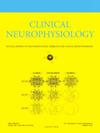小儿重症监护中神经肌肉疾病的电诊断特点
IF 3.7
3区 医学
Q1 CLINICAL NEUROLOGY
引用次数: 0
摘要
方法 回顾性分析 2010 年至 2019 年期间在一家三级医疗中心接受 EDX 测试的患者数据,包括最终的神经肌肉诊断、EDX 结果和人口统计学信息。EDX数据包括运动和感觉神经传导研究、针刺肌电图(EMG)、重复神经刺激和刺激性单纤维EMG。最终的临床诊断基于多项检查,包括肌肉活检、核磁共振成像、基因测试、EDX 测试和临床表型。5 个月),诊断结果分为以下几组:无法确定的神经肌肉疾病(45%)、神经病(13%)、运动神经元疾病(9%)、孤立性球麻痹(6%)、肌病(14%)、神经肌肉接头疾病(5%)和危重病神经肌病(8%)。EDX 数据被分为 7 个电诊断类别:正常、神经病、运动神经元病、孤立性球麻痹、肌病、神经肌肉接头紊乱和重症神经肌病。该研究证实,电生理学是诊断和管理儿科重症监护病房神经肌肉疾病的重要工具。本文章由计算机程序翻译,如有差异,请以英文原文为准。
Electrodiagnostic characteristics of neuromuscular disease in paediatric intensive care
Objective
Assessing peripheral electrodiagnostic (EDX) tests in paediatric intensive care.
Methods
Data from patients who had undergone EDX test/s between 2010 and 2019 at a tertiary centre were retrospectively analysed, including final neuromuscular diagnoses, EDX results and demographic information. EDX data included motor and sensory nerve conduction study, needle electromyography (EMG), repetitive nerve stimulation and stimulated single fiber EMG. Final clinical diagnosis was based on several investigations including muscle biopsy, MR imaging, gene testing, EDX-tests and clinical phenotype.
Results
351 patients were identified (56 % male, average age 42.5 months), with diagnoses categorised into the following groups: no identifiable neuromuscular disorders (45 %), neuropathy (13 %), motor neuron disease (9 %), isolated bulbar palsy (6 %), myopathy (14 %), neuromuscular junction disorders (5 %), and critical illness neuromyopathy (8 %). EDX data was stratified into 7 electrodiagnostic categories: normal, neuropathy, motor neuron disease, isolated bulbar palsy, myopathy, neuromuscular junction disorders, and critical illness neuromyopathy. With this stratification we were able to predict the final diagnosis with acceptable accuracy.
Conclusion
The prevalence of neuromuscular disease groups in paediatric ICU was defined together with their corresponding EDX characteristics.
Significance
The study confirms the utility of electrophysiology as a valuable tool for diagnosing and managing neuromuscular conditions in paediatric ICU.
求助全文
通过发布文献求助,成功后即可免费获取论文全文。
去求助
来源期刊

Clinical Neurophysiology
医学-临床神经学
CiteScore
8.70
自引率
6.40%
发文量
932
审稿时长
59 days
期刊介绍:
As of January 1999, The journal Electroencephalography and Clinical Neurophysiology, and its two sections Electromyography and Motor Control and Evoked Potentials have amalgamated to become this journal - Clinical Neurophysiology.
Clinical Neurophysiology is the official journal of the International Federation of Clinical Neurophysiology, the Brazilian Society of Clinical Neurophysiology, the Czech Society of Clinical Neurophysiology, the Italian Clinical Neurophysiology Society and the International Society of Intraoperative Neurophysiology.The journal is dedicated to fostering research and disseminating information on all aspects of both normal and abnormal functioning of the nervous system. The key aim of the publication is to disseminate scholarly reports on the pathophysiology underlying diseases of the central and peripheral nervous system of human patients. Clinical trials that use neurophysiological measures to document change are encouraged, as are manuscripts reporting data on integrated neuroimaging of central nervous function including, but not limited to, functional MRI, MEG, EEG, PET and other neuroimaging modalities.
 求助内容:
求助内容: 应助结果提醒方式:
应助结果提醒方式:


